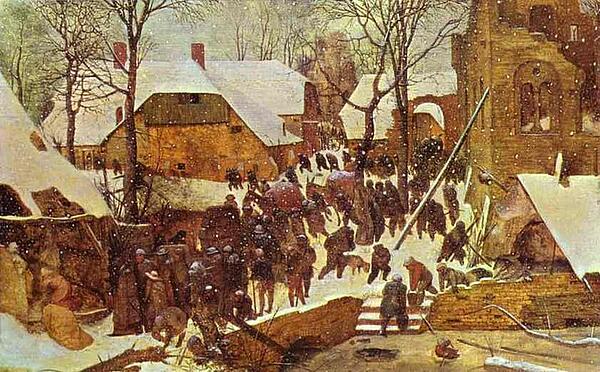Medieval Christmas
Christmas during medieval times was significantly different to the Christmas we know today. Focused on the birth of Christ as instructed by the Church, Christmas was first introduced in 1038 in a Saxon English book, which used the phrase ‘Cristes Maesse’. By 1066, Christmas was seen as a times for celebration and William the Conqueror even held his coronation on Christmas Day after declaring himself king.
Many of the traditions we have adopted for our modern Christmas were introduced during this time, but some were initially considered a nuisance. Carol singing, for example, became a custom after some people interpreted the meaning of carols extremely literally - to sing and dance in a circle - and decided to do so during Christmas services. However, this was quickly banned by the Church and so carol singers were left to sing in the streets, going from door to door.
The traditional Christmas crib can also be traced back to this time, in medieval Italy. According to historians, Saint Francis of Assisi used a crib in 1223 to explain the story of Christmas to local people.

However, not all traditions have passed across to the Christmas we now celebrate. In medieval Europe, for example, 28th December became known as Holy Innocents Day or Childermas Day. This marked the day when King Herod decreed that all boys under the age of two should be killed as part of his attempt to kill Jesus Christ. As part of the celebrations on this day, medieval European towns made it a custom for boys to be made the head of a town for one day after becoming a bishop. However, children in medieval England were beaten instead as a harsh reminder of how cruel Herod was, and the day was henceforth considered bad luck.
The food eaten on Christmas Day in medieval times was also incredibly different to the meal we enjoy today. Turkeys, which originate from America, were not available during this period so the wealthy would mark Christmas with a goose, swan or woodcock. Medieval cooks even had their own tradition of using saffron to make the skin look even more golden when it appeared from the oven.
The Church would also celebrate with a goose, although this would be sold for seven pence to poor people who were able to afford it. Raw goose was also made available, selling for sixpence - the equivalent of one day’s wages.
Venison was another popular meat during Christmas, although the best sections would be reserved for the wealthy. Even so, some of the more amiable lords would allow their peasants to each some of the leftovers, including liver, heart, tongue and ears. Known as umble, these ingredients would be mixed together in a pie with any other leftovers and served up as ‘humble pie’, which is the origin of the modern phrase ‘to eat humble pie’.
Mince pies were one edible tradition that medieval England does share with our modern celebrations. During this period, large mince pies would be filled with shredded meat, spices and fruit, and baked. The tradition of adding meat was removed in Victorian times, but the term ‘mince’ remained. Mince pies were an important part of Christmas and it was believed that if one could make a wish on a first bite of their first mince pie of the year, their wish would come true.
Aside from mince pies, medieval England also enjoyed Christmas puddings made from a a type of spiced porridge known as ‘frumenty’. Frumenty was created from boiled wheat or porridge combined with fruit, egg and spices.
Entertainment on Christmas Day was provided by actors, who performed dances and plays in castle or villages. This tradition was known as ‘mumming’ and would often centre around the telling of the story of Christ, featuring King Herod as the equivalent of today’s pantomime villain.
Boxing day had traditions of its own, the most popular of which was the giving of money from lords to the poor. Known as a piggie - and the origin of the modern day term piggy bank - the money was presented in a hollow clay pot with a slit on top that must be removed to provide access to the money.
See also: The Longbow
MLA Citation/Reference
"Medieval Christmas". HistoryLearning.com. 2025. Web.
